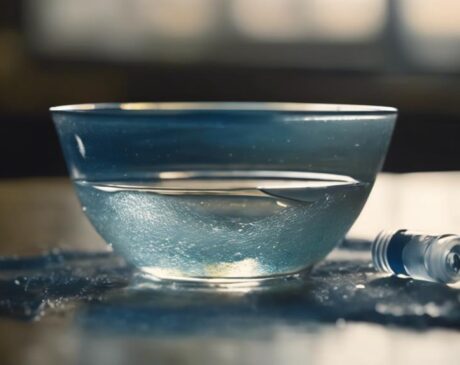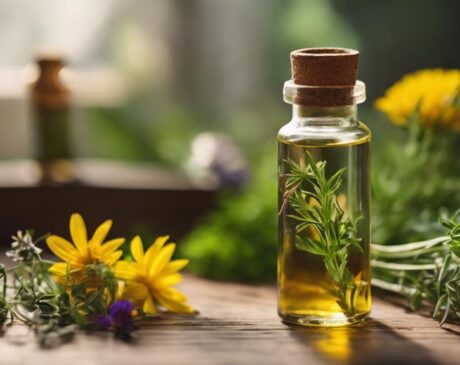Can I Use Acrylic as Nail Glue?
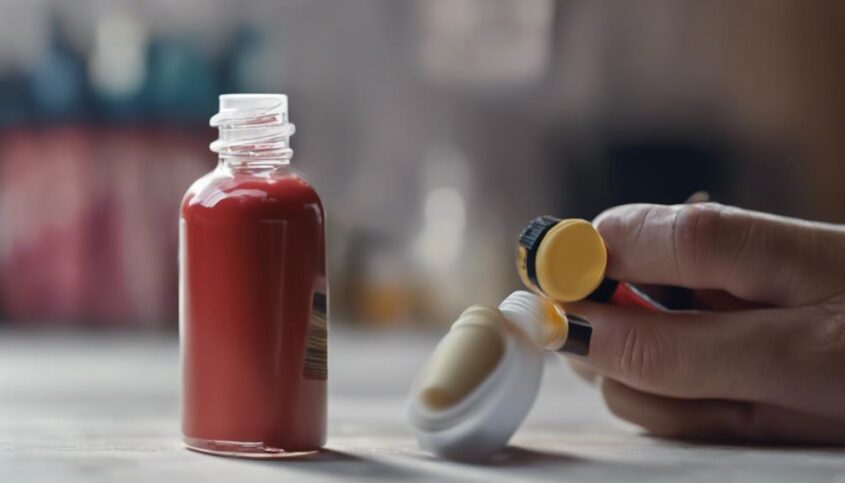
Acrylic serves as effective nail glue due to its strong bonding, flexibility, and durability. It requires proper ventilation, following manufacturer's instructions, and patch tests for safety. The process involves preparing acrylic powder and applying liquid monomer. The quality of application affects the longevity of the bond. Different nail types need specific preparation and application methods. Risks include weak nails and challenging removal. To learn more about using acrylic as nail glue, refer to safe practices, benefits, and alternatives.
Key Takeaways
- Acrylic can be used as nail glue for applying acrylic nails.
- Acrylic glue offers strong bonding and durability for artificial nails.
- Proper application techniques and ventilation are crucial for safety.
- Acrylic as nail glue can strengthen natural nails and provide customization.
- Removal may require soaking in acetone or professional assistance.
Safety of Using Acrylic for Nails
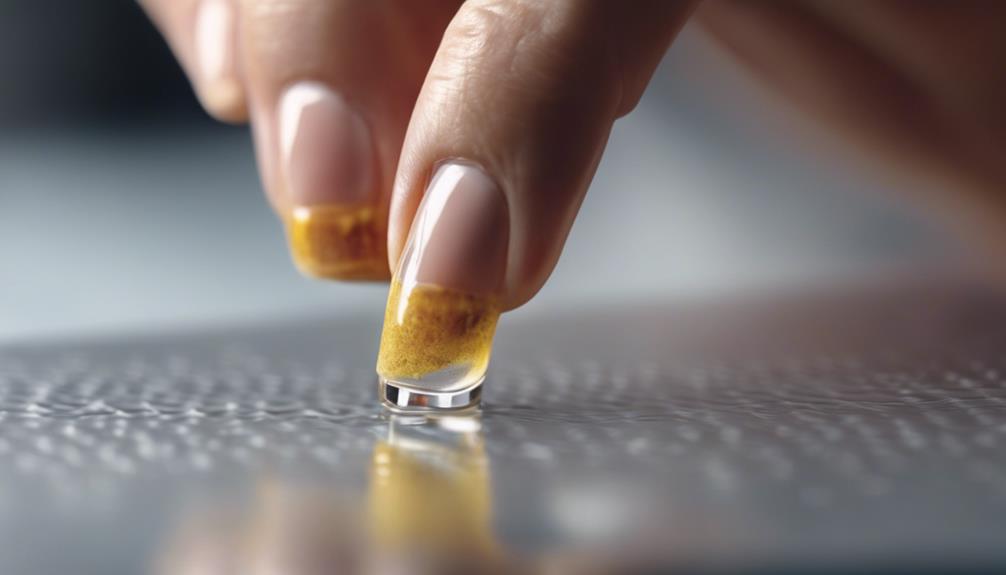
Using acrylic for nail applications comes with certain safety considerations that are important to understand and implement for a successful and risk-free experience. When working with acrylic as nail glue, it is crucial to ensure proper ventilation in the workspace to avoid inhaling potentially harmful fumes. Additionally, wearing gloves can protect your skin from any irritation that may arise from prolonged contact with the acrylic. It is advisable to follow the manufacturer's instructions meticulously to achieve the desired results without compromising safety.
Furthermore, being mindful of the potential allergens present in acrylic products is essential to prevent adverse reactions. Conducting a patch test before full application can help identify any sensitivity to the product. In the event of any redness, swelling, or itching, discontinue use immediately and seek medical advice.
Effectiveness Compared to Traditional Glue
When comparing the effectiveness of acrylic as nail glue to traditional glue options, it is essential to consider various factors that influence the durability and longevity of the nail application. Acrylic nail glue offers several advantages over traditional glue. One key factor is its exceptional bonding strength, which can help prevent nails from lifting or breaking easily. Acrylic glue is also known for its flexibility, allowing for natural movement without compromising the adhesion. This flexibility is particularly beneficial for individuals with an active lifestyle or those who frequently use their hands. Moreover, acrylic glue tends to have a longer lifespan compared to traditional options, reducing the need for frequent touch-ups or replacements. Additionally, acrylic glue can enhance the overall appearance of the nails, providing a smooth and professional finish. Overall, when seeking a durable and long-lasting nail application, acrylic nail glue proves to be a superior choice compared to traditional glue alternatives.
Application Process for Using Acrylic
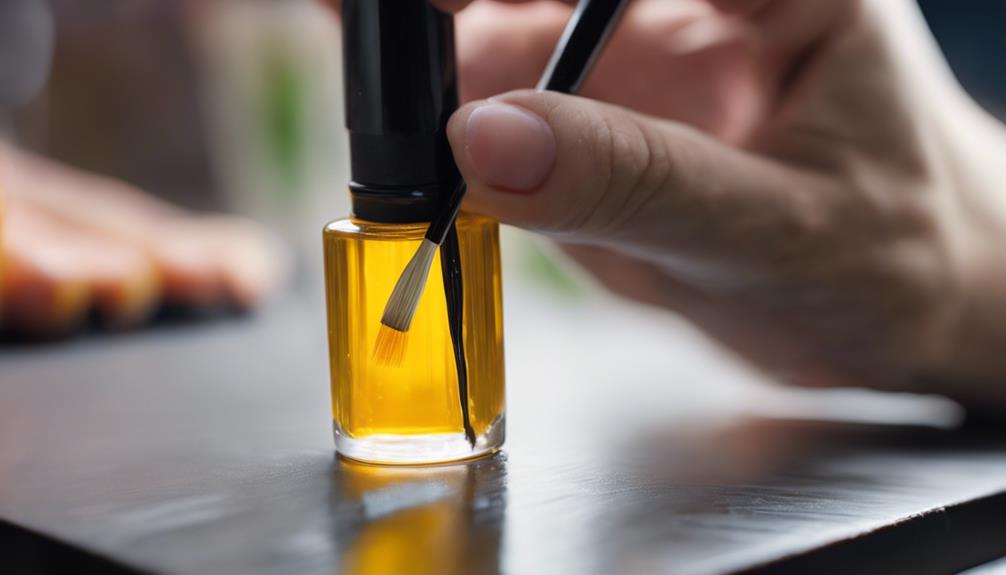
Let's explore the essential steps involved in using acrylic as nail glue. Understanding how to prepare acrylic powder and apply liquid monomer is crucial for achieving strong and long-lasting nail extensions. Mastering the application process will help you create beautiful and durable acrylic nails.
Acrylic Powder Preparation
Before applying acrylic powder for nail enhancement, it is essential to properly prepare the nails and gather all necessary tools for the application process. To ensure a successful application, follow these key steps:
- Cleanse the nails: Start by removing any existing nail polish and thoroughly clean the nails to ensure a smooth surface for the acrylic powder.
- Shape and buff: Use a nail file to shape the nails according to your preference and gently buff the surface to remove any natural oils.
- Apply a primer: To promote adhesion, apply a nail primer to the natural nails before starting the acrylic application process.
Liquid Monomer Application
To achieve a durable and professional acrylic nail application, the precise and skillful application of liquid monomer is crucial. Liquid monomer serves as the catalyst that transforms acrylic powder into a pliable mixture, allowing for easy application onto the nail bed. The application process involves dipping a brush into the liquid monomer and then into the acrylic powder, creating a small bead of the mixture. This bead is then carefully placed and sculpted onto the nail, ensuring smooth and even coverage. It is essential to work efficiently but with precision to prevent the mixture from hardening before achieving the desired shape. Proper ventilation is also necessary during the application process due to the strong odor of the liquid monomer.
Longevity of Acrylic as Nail Adhesive
How effectively does acrylic maintain its adhesive properties when used as nail glue? Acrylic can be a durable and long-lasting adhesive when applied correctly. The longevity of acrylic as a nail adhesive can depend on various factors that influence its performance.
- Application Technique: Properly preparing the nail surface, applying the acrylic evenly, and ensuring a secure bond with the nail tip are crucial for maximizing the longevity of the adhesive.
- Quality of Products: Using high-quality acrylic products that are specifically designed for nail adhesion can significantly impact the longevity of the adhesive.
- Maintenance: Regular maintenance, such as filling in any gaps or lifting, can help extend the lifespan of the acrylic adhesive on the nails.
Compatibility With Different Nail Types
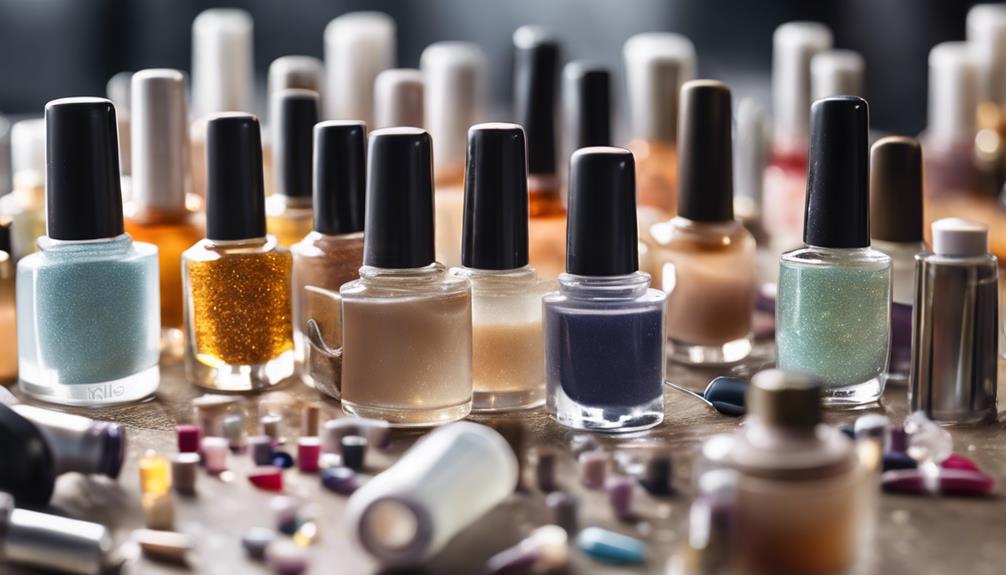
When considering the compatibility of acrylic as nail glue with different nail types, it is crucial to assess how well the adhesive adheres to various surfaces. Understanding the strength of the acrylic adhesion on different nail types will help determine its effectiveness. Additionally, exploring suggested application techniques can optimize the bonding process for a longer-lasting result.
Nail Types Compatibility
Different types of nails have varying compatibility with acrylic as a nail glue, impacting the longevity and durability of the manicure. When considering the compatibility between nail types and acrylic nail glue, it's essential to understand how different materials interact to achieve the best results. Here are some key points to keep in mind:
- Natural Nails: Acrylic nail glue works well with natural nails, providing a strong bond when applied correctly.
- Acrylic Nails: Using acrylic nail glue on acrylic nails can enhance the strength and durability of the manicure.
- Gel Nails: While acrylic nail glue can be used on gel nails, proper preparation and application techniques are crucial for optimal adhesion.
Understanding the compatibility of nail types with acrylic nail glue can lead to stunning and long-lasting manicures.
Acrylic Adhesion Strength
Acrylic adhesion strength varies depending on the compatibility of different nail types with the adhesive. The surface of the natural nail plays a crucial role in determining how well acrylic adhesion will work. Nails that are clean, dry, and free from oils or residues will provide a better surface for the acrylic to bond to, enhancing its adhesion strength. Additionally, the texture and condition of the natural nail can impact the effectiveness of the acrylic adhesive. Smooth, healthy nails tend to promote stronger adhesion compared to brittle or damaged nails. Understanding the interplay between the acrylic adhesive and different nail types is essential for achieving optimal adhesion strength and long-lasting results in nail applications.
Application Techniques Suggested
For optimal results in nail applications, it is important to consider the compatibility of application techniques with various nail types. When working with different nails, try these innovative application techniques:
- Gel Nails: Utilize a gentle buffing technique to create a slightly rough surface for better adhesion.
- Acrylic Nails: Apply a thin layer of primer before the acrylic for enhanced bonding.
- Natural Nails: Ensure nails are clean and oil-free to promote longevity of the nail application.
Potential Risks of Using Acrylic
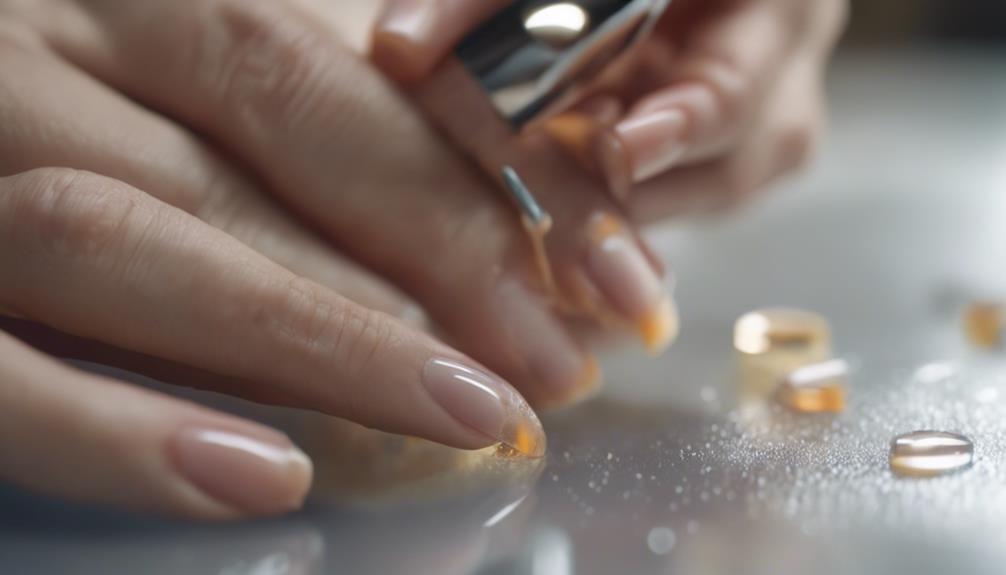
When considering the use of acrylic as nail glue, it is crucial to be aware of the potential risks associated with this method. One risk is the potential for allergic reactions. Some individuals may be sensitive to the chemicals in acrylic products, leading to redness, itching, or swelling around the nail area. Moreover, improper application of acrylic can result in damage to the natural nail bed. If acrylic is not applied correctly, it may cause the nails to become weak, brittle, or prone to breakage. Additionally, the use of acrylic as nail glue may make it challenging to remove the artificial nails without causing further damage to the natural nails. Furthermore, the fumes emitted during the application process can be harmful if inhaled in large quantities, potentially leading to respiratory issues. Understanding these risks is essential for ensuring the safe and effective use of acrylic as a nail adhesive.
Removal Process for Acrylic Nails
Understanding the proper removal process for acrylic nails is key to maintaining the health and integrity of your natural nails after their use as nail glue. When it's time to bid farewell to your acrylic nails, here are some innovative methods to ensure a safe and effective removal process:
- Soaking Method: Submerge your nails in acetone for about 15-20 minutes to loosen the acrylic. Gently file off the softened acrylic to reveal your natural nails underneath.
- Acetone Wraps: Soak cotton balls in acetone, place them on your nails, and wrap each finger with aluminum foil. Leave them on for 15-20 minutes to dissolve the acrylic for easier removal.
- Professional Removal: Visit a salon for professional removal. Nail technicians have specialized tools and techniques to safely dissolve and remove acrylic nails without causing damage to your natural nails.
Frequently Asked Questions
Can I Use Acrylic as Nail Glue to Apply Artificial Nails?
When applying artificial nails, using acrylic as nail glue is not recommended. Acrylic and nail glue serve different purposes in nail art. Nail glue is specifically designed for adhering artificial nails securely, ensuring a longer-lasting and professional finish.
Will Using Acrylic as Nail Glue Damage My Natural Nails?
Utilizing acrylic as a nail adhesive may lead to potential harm to your natural nails. The harsh chemicals in acrylic can weaken and damage the nail bed over time. It is advisable to seek professional nail products for optimal nail health.
Can I Use Acrylic as Nail Glue for Repairing Broken Nails?
Acrylic can effectively repair broken nails when used as a bonding agent. Its durable nature and ability to adhere to nail surfaces can provide a strong hold. However, proper application techniques and maintenance are crucial for optimal results.
How Long Does It Take for Acrylic Nail Glue to Set?
The setting time for acrylic nail glue typically ranges from 30 seconds to 2 minutes, depending on the specific product used. It is crucial to allow sufficient time for the glue to fully set before engaging in activities that may compromise its adhesion.
Can I Use Acrylic as Nail Glue for Nail Art Decorations?
Acrylic is a versatile material commonly used in nail art for its durability and versatility. When considering using acrylic for nail art decorations, its adhesive properties can be leveraged effectively to adhere embellishments securely in place for long-lasting, creative designs.

